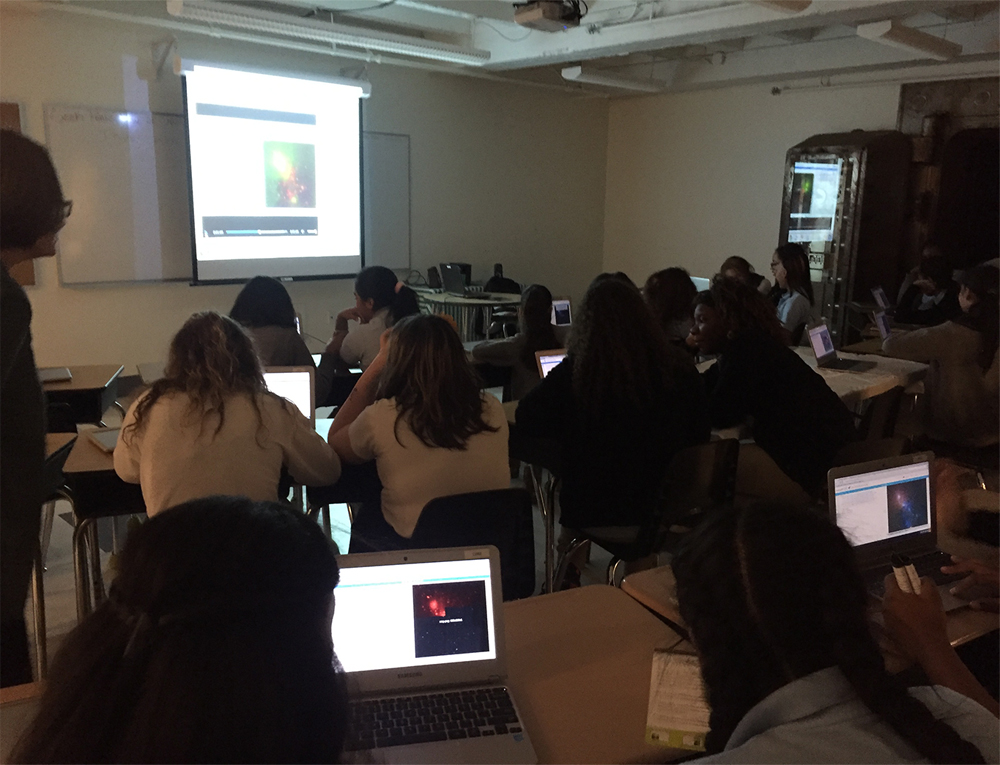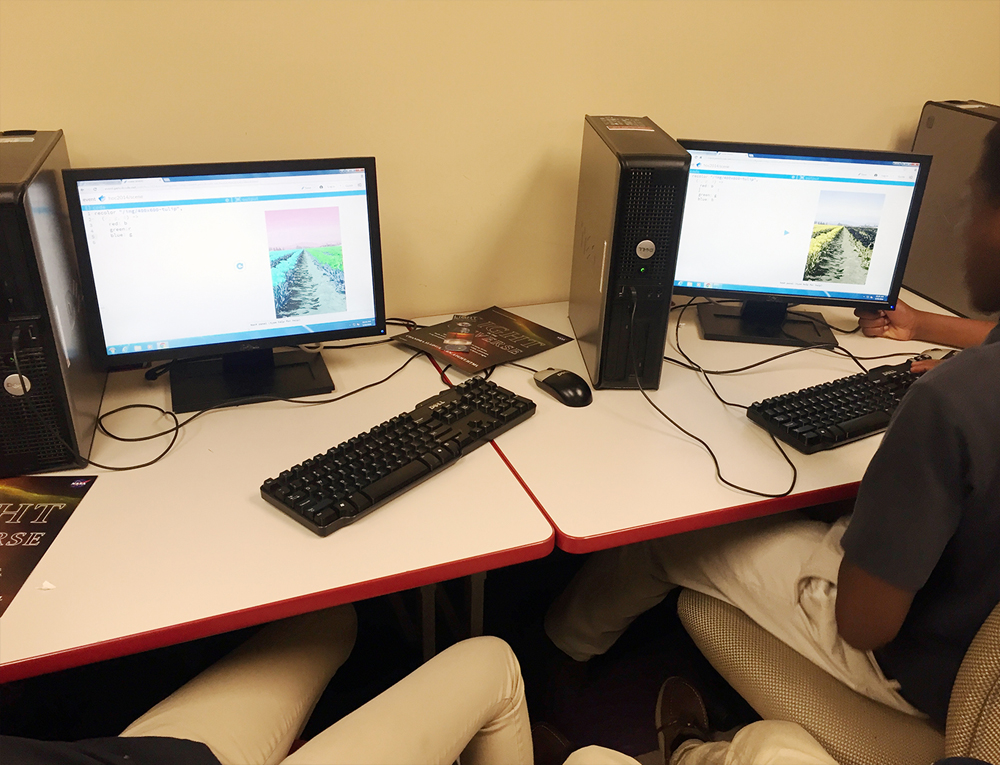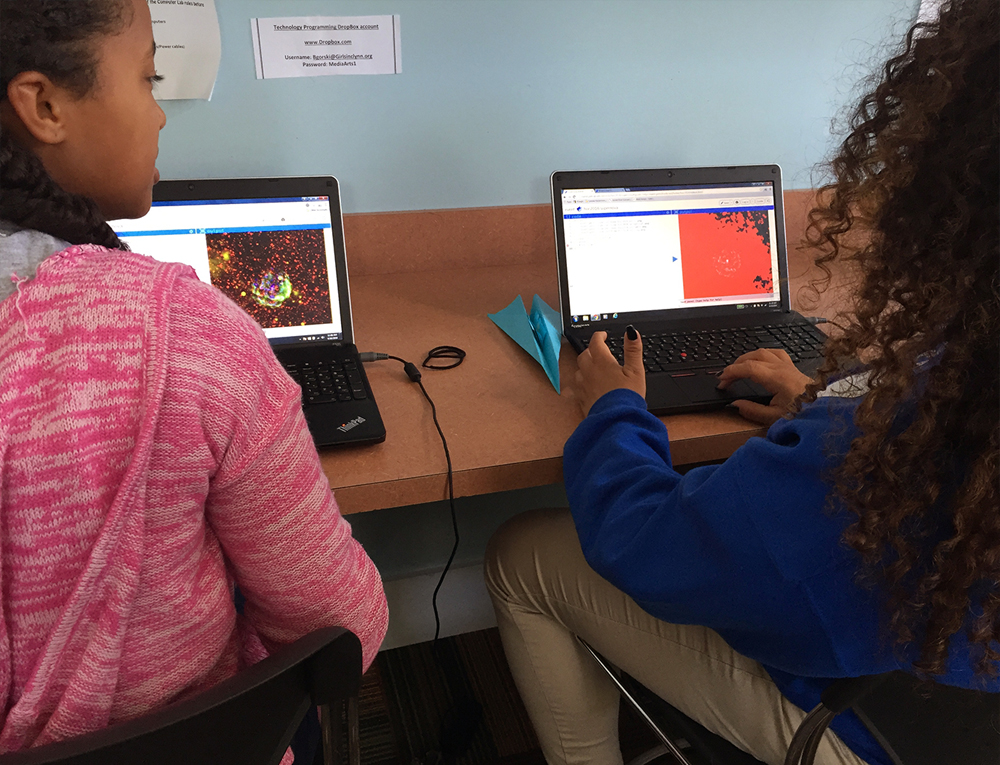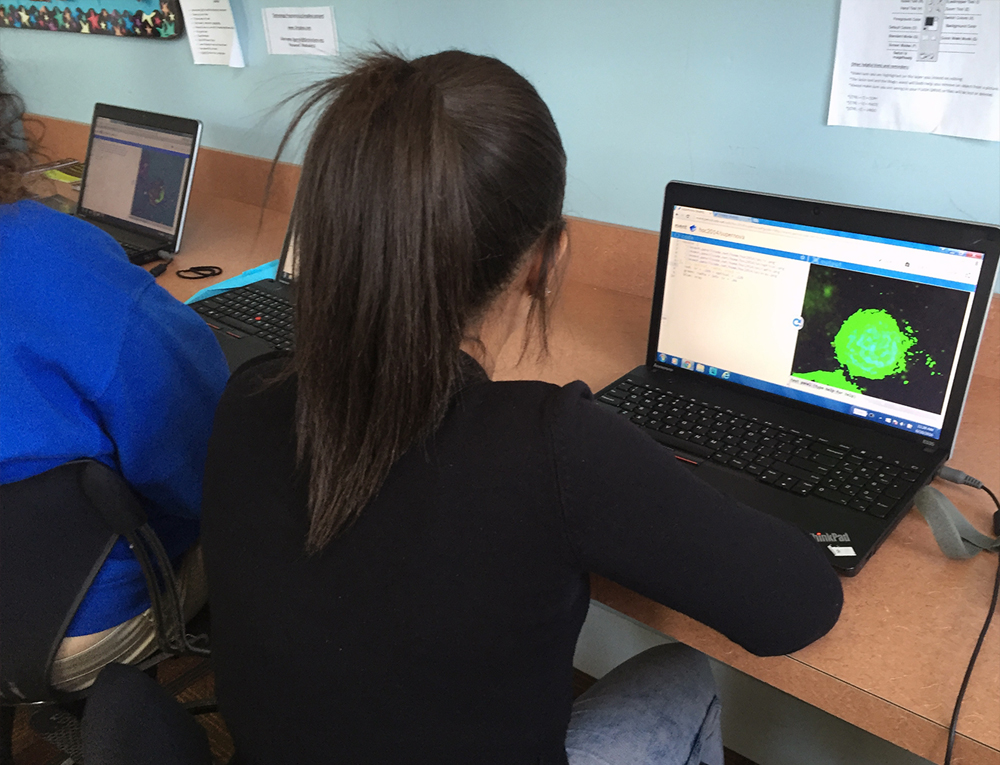

Color, Astronomy and Coding
Using data from NASA's Chandra X-ray Observatory and other satellites on exploded stars, star-forming regions, and black holes, you'll learn basic coding. By following the video tutorials below, you will see just how integral coding is in the pursuit of learning about our Universe. It's an example of the exciting ways that computer science is both part of routine tasks in our every day lives and part of the exciting quest to explore the cosmos.
Launch the coding activity now or start with the resources below for background information, facilitator guides, video tutorials and student examples.

The Nuts and Bolts
Launch the Coding Activities
Explore the Science
More Background & Resources
Student Examples





